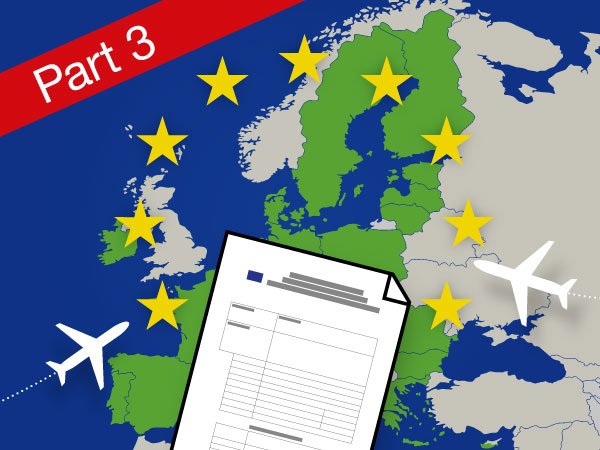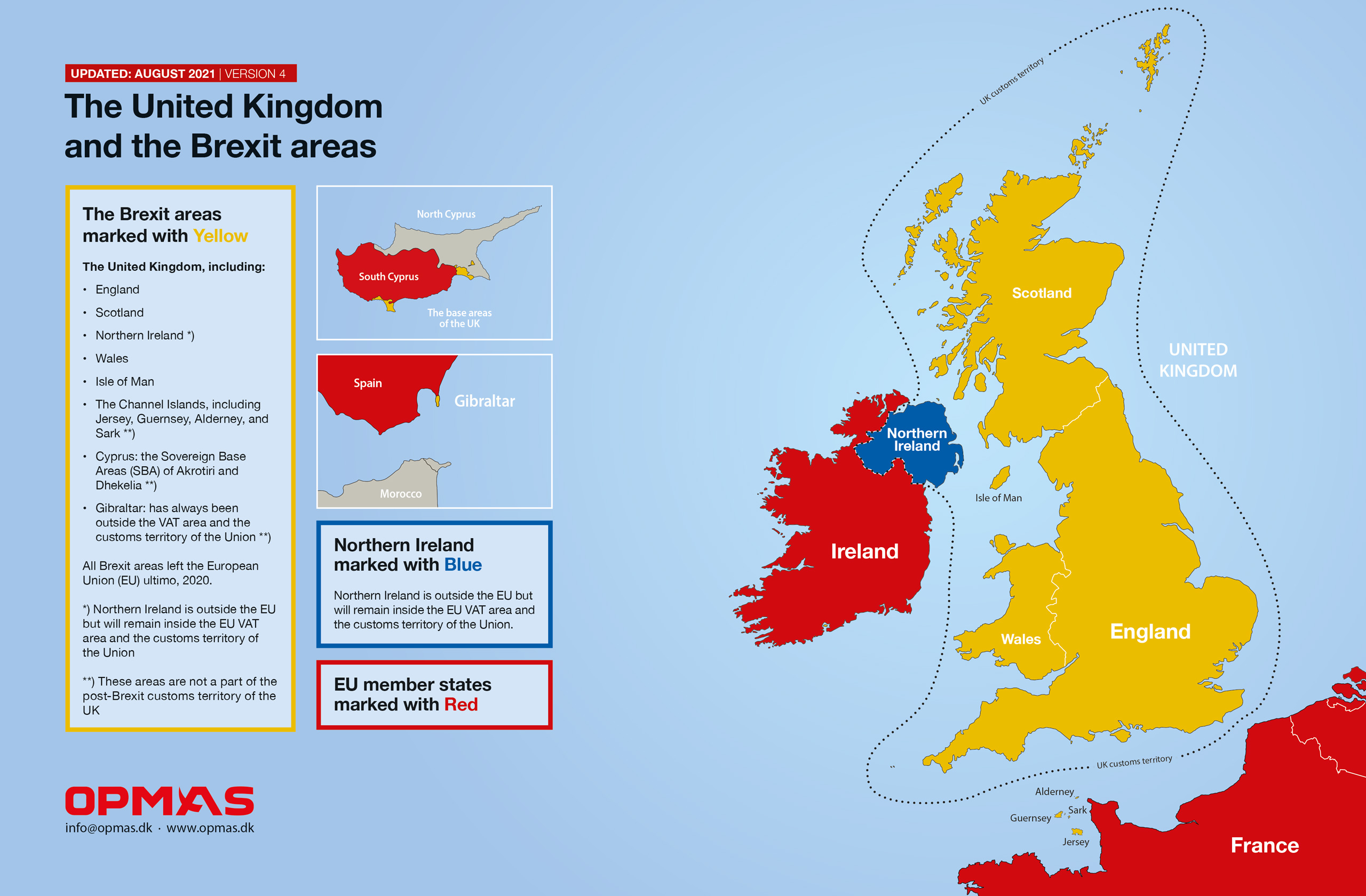COMMERCIAL AND CORPORATE FLYING WITHIN THE EUROPEAN UNION
Short & Sweet no. 14
Part 3: Using Temporary Admission
– when does an operator need help?
Added 2022 – Updated March 2024


- In which scenarios will an operator need help and guidance?
- Do you need a helping hand?
- All the reasons to ask for a helping hand
- Be ready for customs ramp checks
Many operators can use Temporary Admission without help from customs experts such as OPMAS. Yet, in some cases, there are good reasons to ask for a helping hand to secure overall TA compliance and be ready for customs ramp checks around the EU. Let us dig a bit deeper into the topic.
Other Short & Sweet articles about arriving in the EU using the TA procedure.
| Short & Sweet mail no. 6 | Flying with EU-resident persons onboard when using TA |
| Short & Sweet mail no. 9 | Part 1: What is the Supporting Document, and how do you use it? |
| Short & Sweet mail no. 11 | Part 2: What do customs look for during a ramp check, and why? |
| Short & Sweet mail no. 21 | Part 4: How do you prepare to handle a customs ramp check? |
The customs aspect of flying within the EU
Any aircraft flying into the EU will operate under customs control using either the Temporary Admission procedure (TA) or full importation. There are no other options. If the aircraft is not already fully imported, the aircraft will automatically be considered as flying under the TA procedure even though the owner or operator has not themselves taken any action to activate this procedure or realized that their aircraft is flying under TA. The TA procedure is thus always required when flying to the EU, even for a flight with only one stop within the EU. Here, non-compliance with TA will most likely activate a direct payment of the VAT (ranging from 17-27%) and customs duty (2.7%) for the owner or operator. The TA procedure can only be used by EU outsiders where the aircraft is owned (including any UBOs), operated, registered, and based outside the EU, leaving EU insiders only one option: full importation. EU outsiders can, of course, choose to use full importation instead of TA if they find it beneficial. However, both options can be used commercially or privately if applied correctly.
Do you need a helping hand?
Help with documenting or clarifying TA compliance might not be needed if the aircraft only has flights that start or end outside the EU (no internal EU trips), does not carry any EU-resident crew or passengers, and the crew and operator understand the practical usage of the TA procedure as these types of flights typically do not trigger customs ramp checks. However, we will always recommend that operators check and document full TA compliance before flying to the EU, as other factors than those mentioned might also influence compliance.
All the reasons to ask for a helping hand
If the aircraft has a more complex flight pattern with internal EU trips, carries EU-resident persons onboard – both crew and passengers – and any delays, uncertainties, and TA-compliance risks want to be avoided, we recommend letting us examine the specific case. The below-mentioned points are typical situations where operators need help and guidance to use TA properly. None of the situations cause problems for using TA if handled and documented correctly.
- You have a case with an owner (including the UBO) with EU citizenship but resides outside the EU
- You have a complicated aircraft structure and wonder if it will work with TA
- You need help securing the use of TA and prepare a ready-to-use portfolio to prove TA compliance for customs
- You need a tool to quickly handle a customs ramp check
- You have pilots who do not fully understand the use of TA
- Your pilots feel unsure explaining customs why their aircraft is eligible to use TA
- You plan to fly commercial group charters (such as Part 135)
- You plan to fly with passengers where the purpose of the flight is business (such as Part 91)
- You plan to fly point to point within the EU
- You plan to ask the passengers to reimburse flight costs
- You plan to use the aircraft for purposes such as, e.g. demonstration flights
- You plan to use a yacht-based helicopter
- You wonder whether the crew or the passengers are considered the users of the aircraft (decisive for rights)
- You plan to appoint the owner entity the declarant in customs (TA) context instead of the management company
- You have heard that the owner must be present somewhere within the EU (not correct in most cases)
- You have heard that an authorization letter is mandatory when carrying EU-resident passengers (never been correct)
- You plan to employ EU-resident pilots
- You plan to carry EU-resident passengers
- You plan to carry pets
- You are confused about the use of the Supporting Document
- You are confused about the demand for entry and exit documentation
- You wonder how the six-month period of stay is defined
IMPORTANT!
How to handle a customs ramp check
Ramp checks will eventually happen, so any operator ought to be prepared to avoid wasting time on the ramp. All experience shows that a convincing portfolio and well-prepared pilots will close all inspection issues effectively, while a fumbling start will often prolong an inspection for hours or days. About one-third of all recorded TA problems are related to the operators’ inability to understand and document the correct use of TA. In these cases, compliance is not an issue, only the lack of ability to prove compliance.
Correct documentation is a make-or-break issue
Even though using TA is supposed to be a simple, paperless process for most operators, documentation must not be disregarded. Correct documentation proving TA compliance is a make-or-break issue during customs ramp checks. The Supporting Document (if used upon entry) alone does not prove TA compliance. Only the entry and exit are supposed to be paperless, but the operator must continuously live up to the TA preconditions, handle the limitations correctly, and be able to document these at any time, even if flights are just in and out of the EU with only one visited destination. Also, operators should always consider how to document TA compliance as well as handle and secure the known grey zone areas when using TA. The relevant documentation can be conditioned without help from OPMAS, but we will be happy to help and have years of experience with this process. We offer different TA solutions depending on the risk profile and typical flight pattern. Please inquire for more details.
The Temporary Admission procedure has become a very well-defined customs procedure
Please note that TA can be used to fly privately, corporately, and commercially within the EU without any problems and with EU-resident persons onboard if applied correctly. Since 2014, the TA procedure has become a very well-defined customs procedure, especially for corporate and commercial aviation. This is thanks to the huge effort from, e.g., the EU Commission and NBAA.
Legal background for Temporary Admission
The Istanbul convention from 1990, regulating the worldwide usage of TA, is not very precise, and the EU Commission has been and is continuously publishing various working papers and guidelines to clarify the correct understanding of TA and its usage in the EU. The 2014 working paper from the Union Customs Code Committee (available in English, French, and German) is especially important. Operators should always be aware that these documents are not binding for EU member states, which is why different interpretations exist between member states, thus also why it is important to have a competent customs agency outlining the correct use and understanding based on the specific setup. The problem with local interpretations is often related to flights within France, Spain, Portugal, Italy, and Greece.
How can we help?
If you have questions about the above, please do not hesitate to contact us.
List of all OPMAS
Short & Sweet mails:
No. 21 – Part 4: Using Temporary Admission – how to prepare for a customs ramp check
Jan 2024 TA
No. 20 – Buying or selling aircraft within, to, or from the EU
Nov 2023 TA FI
No. 19 – The real differences between full importation and Temporary Admission
Sep 2023 - Updated 2024 TA FI
No. 18 – Exporting an aircraft from the EU
Jun 2023 - Updated 2024 FI
No. 17 – What is the correct use of a corporate aircraft?
Mar 2023 - Updated 2024 FI
No. 16 – Which customs procedures can be used for parking an aircraft within the EU?
Jan 2023 - Updated 2024 TA FI
No. 15 – Liability and risk elements associated with EU importation and admission
Oct 2022 - Updated 2024 TA FI
No. 14 – Part 3: Using Temporary Admission – when does an operator need help?
Aug 2022 – Updated 2024 TA
No. 13 – Importation impacts when traveling the world in corporate aircraft
Jun 2022 - Updated 2024 FI
No. 12 – How to get the 0% airline VAT exemption meant for commercial operators
May 2022 - Updated 2024 FI
No. 11 – Part 2: Using Temporary Admission
– what do customs look for during a ramp check, and why?
Mar 2022 – Updated 2024 TA
No. 10 – How to handle aircraft maintenance correct in a customs context
Feb 2022 - Updated 2024 TA FI
No. 9 – Part 1: Using Temporary Admission – the Supporting Document
Dec 2021 – Updated 2024 TA
No. 8 – Do not fall into the operator trap when flying within the EU and UK
Oct 2021 - Updated 2024 TA FI
No. 7 – Which offshore aircraft registrations can be used with Temporary Admissions when flying within the EU and UK?
Sep 2021 - Updated 2024 TA
No. 6 – Flying with EU-resident persons onboard when using Temporary Admission
Aug 2021 - Updated 2024 TA
No. 5 – What about private use
of corporate aircraft?
May 2021 - Updated 2024 TA FI
No. 4 – What does ‘VAT paid’ mean?
Mar 2021 - Updated 2024 FI
No. 3 – Is a full importation needed
in both the UK and the EU27?
Mar 2021 - Updated 2024 FI
No. 2 – Flying commercially
within the EU
Feb 2021 - Updated 2024 TA FI
No. 1 – Flying with the
CEO
Nov 2020 - Updated 2024 TA FI

